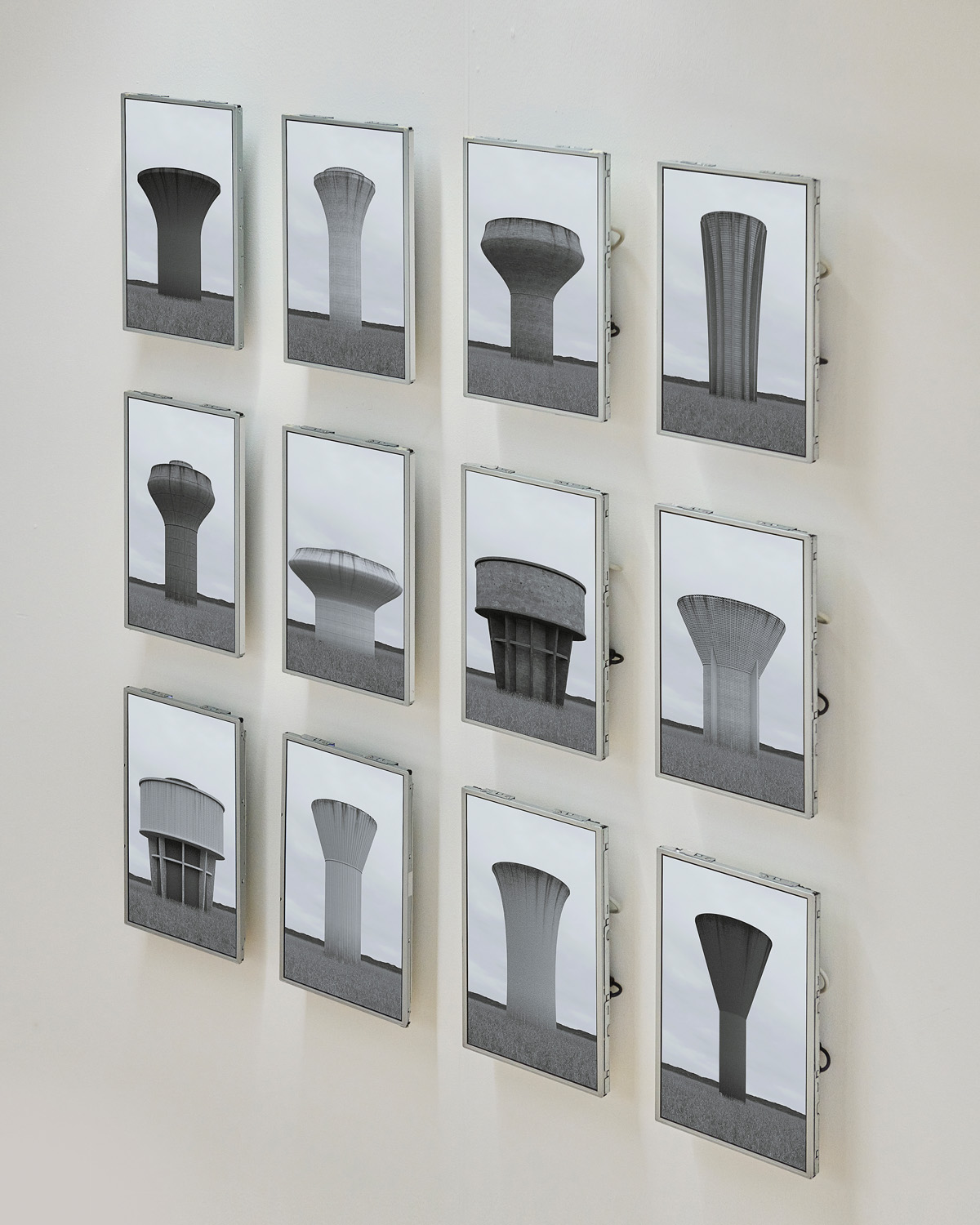wasserturm()
For his series Wasseturm() series, Philipp Klak coded a script , which allows him to generate an almost infinite amount of pictures of “anonymous sculptures”, inspired by the research method developed by Hilla and Bernd Becher in the mid-1960s. By establishing a strict protocol to photograph housing and disappearing industrial architecture, the couple aimed at objectifying as much as possible the capturing procedure, in order to limit personal subjectivity and enforce the best possible comparability. While the original endeavor clearly stems from a documentary intention, their methodology reflects processual practices close to conceptual art. Starting from these premises, Klak addresses the implications of automation reinterpreting the Becher protocol. Created from textured 3D objects and predefined backgrounds, the computational images appear and vanish at a set interval, within what Martina Dobbe calls a “photographic tableau”(→ Ref.1), a supra-image comprising in this case 16 frames. By investigating randomness and serendipity, he uncovers the hidden procedural functions at work to generate the photographs. The comparative mechanism, which enforces the viewers ability to differentiate or associate given images, is undermined by the loop and the instability it induces, in an evocative confrontation of the instability of computation and the supposed permanency of the photographic image.
PROCEDURAL MODELING, SCREEN INSTALLATION
Ref.1 Martina Dobbe, Bernd und Hilla Becher. Fachwerkhäuser, Siegen, Museum für Gegenwartskunst Siegen, 2013 (2001), p. 39 – 41.
Text by Claus Gunti










